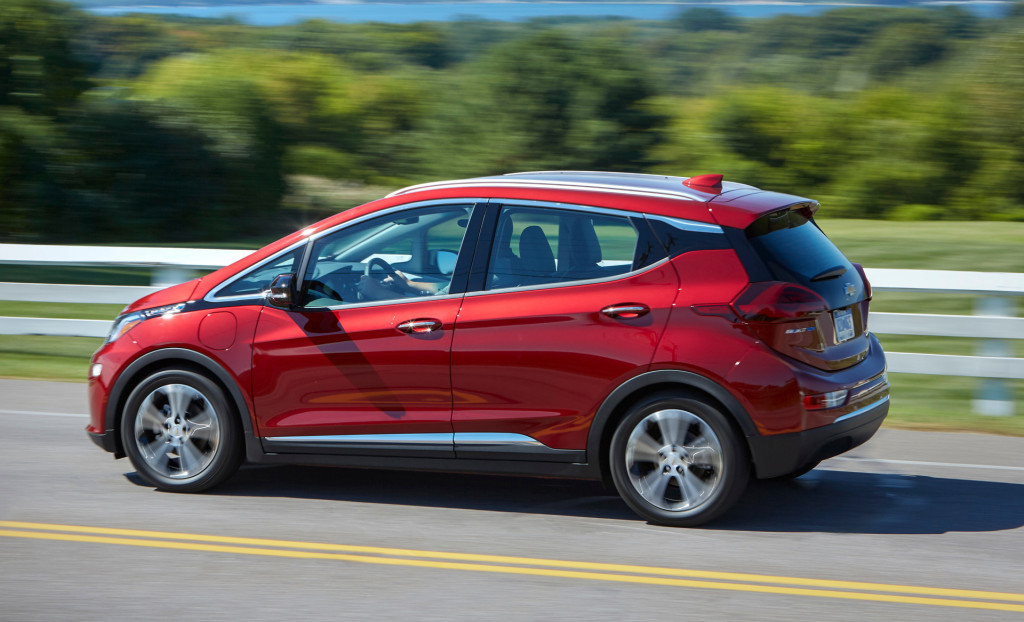General Motors has issued a recall for certain 2019 and 2020 Chevrolet Bolt EV electric cars due to a very odd potential malfunction that could cause rear doors to open while driving.
Door-handle cables in the 897 affected vehicles may be too long, according to a National Highway Traffic Safety Administration (NHTSA) recall notice.
When the rear window is opened, it may contact and damage the door-handle cable, according to the notice. If the cable is sufficiently damaged from repeated window opening, it may cause the door to open unexpectedly.
A damaged cable may also render the inside door handle inoperable, the NHTSA said.
To fix the issue, dealers will replace the cable in both rear doors free of charge.
This issue has nothing to do with the Bolt EV's propulsion system, and could happen to any vehicle regardless of whether it has an electric or internal-combustion powertrain. As this very unusual issue is a safety-critical one, Green Car Reports wanted to get the word out to Bolt EV drivers.

2020 Chevrolet Bolt EV
Owners of affected vehicles will be notified by mail, or can check by looking up a car's vehicle identification number (VIN) at either the GM Owner Center or the Safercar.gov website.
The recall is expected to begin May 11. Owners can contact Chevrolet customer service at 1-800-222-1020 with any questions. GM's reference number for the recall is A202298320.
If you haven't kept up on your Bolt EV news, GM's compact electric car was slated to get a significant refresh for the 2021 model year, but that has been pushed back due to the global coronavirus pandemic.
The refresh will include numerous interior upgrades, such as new front seats, a sportier steering wheel design, and a push-button shifter in place of the traditional shift lever. A Bolt EUV with a little more length and back-seat space is also slated to join the lineup. And then as the current-generation Bolt EV heads into middle age, GM is planning many new electric models based on its new Ultium electric propulsion strategy.
